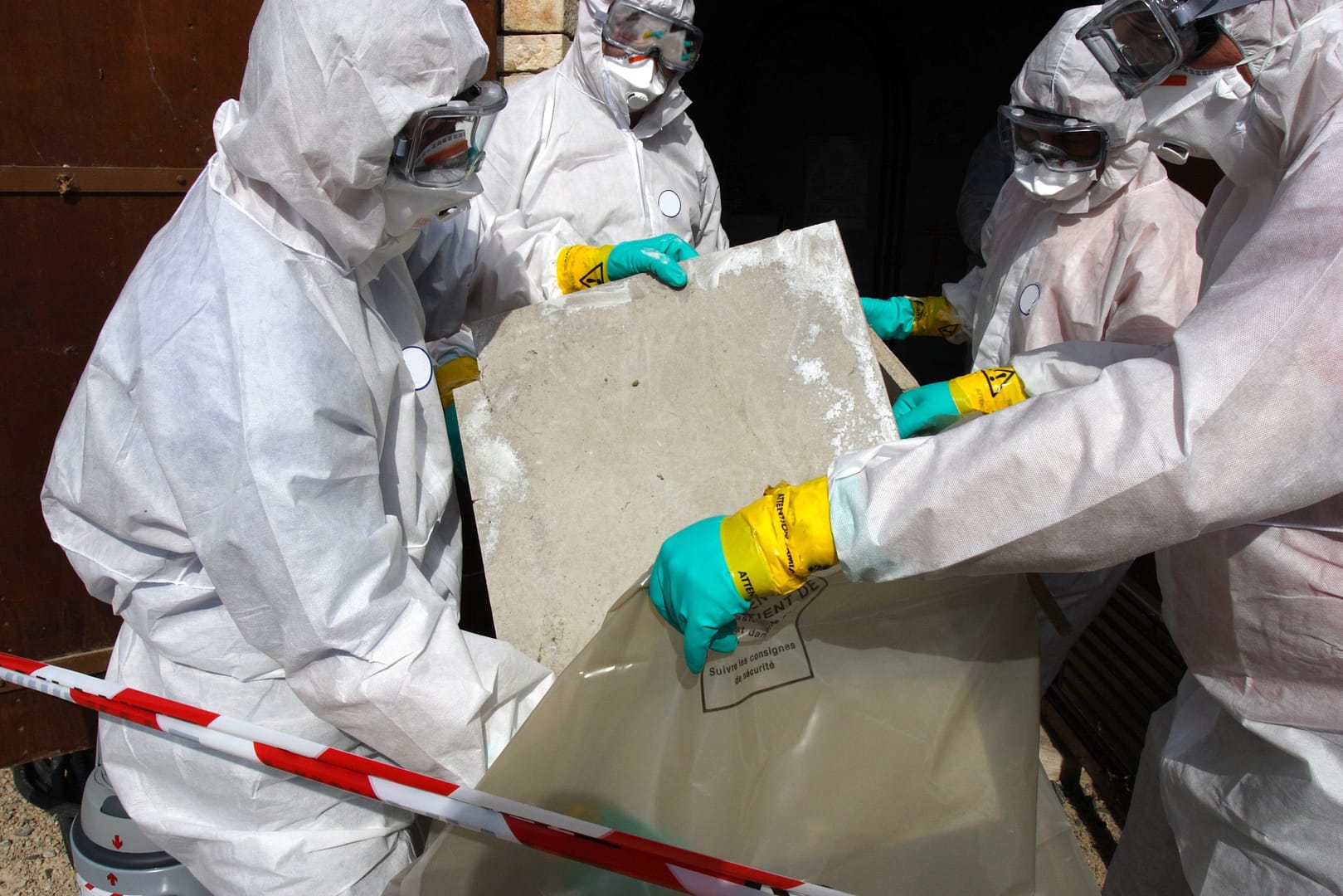Asbestos on the Ceiling: A Pervasive Historical Problem
When one thinks of interior aesthetics from the past, popcorn ceilings might come to mind. But these textured surfaces were more than just a design choice; they often contained asbestos on the ceiling. Widely lauded for its fire resistance, strength, and insulating properties, asbestos was a staple in construction materials for decades.
Asbestos in Construction: What You Need to Know
Asbestos, particularly asbestos on the ceiling, was a go-to choice for builders. This mineral, hailed for its myriad of benefits, wasn’t restricted to ceilings alone. Floor tiles, drywall, and siding also frequently contain asbestos, making the removal process crucial for modern renovations. However, as public awareness about its health risks surged, the demand for asbestos popcorn ceiling removal and similar services skyrocketed.
Spotlighting Asbestos on the ceiling in Floor, Drywall, Siding, and Concrete Structures
Delving deeper into the issue, it’s clear that homes built during the 50s through the 70s are at a higher risk of containing asbestos on the ceiling. This is particularly prevalent in popcorn ceilings. If you’re considering a renovation, understanding the asbestos popcorn ceiling removal process is vital.
Removing asbestos isn’t restricted to ceilings. Asbestos-laden materials lurk in various parts of older homes, prompting searches for services like asbestos shingle removal Siding, especially, has been a major concern, leading to increased demand for asbestos siding abatement and proper asbestos siding disposal.
Sealing asbestos, especially in ceilings, is one approach homeowners might consider. Sealing with a sealant contains hazardous fibres, stopping them from going airborne. In fact, sealing an asbestos ceiling has become a popular temporary fix until proper removal can occur. However, for those who want a complete resolution, looking into the removal of asbestos ceiling tiles or removing asbestos drywall is important.
But asbestos isn’t just an indoor problem. Many older homes have pipelines wrapped in insulation containing asbestos, which is why services for removing asbestos pipe insulation are sought after. Moreover, concrete asbestos removal has become essential, given how commonly asbestos was mixed with concrete to enhance its properties.
In some cases, homeowners, in their bid to modernize homes, have come across foam asbestos, leading to queries about the relationship between spray foam insulation and asbestos. However, modern spray foam doesn’t contain asbestos. But if you have an older home, it’s prudent to get every layer checked, including underpayments and insulation.
The Risks of Asbestos:
Asbestos on the Ceiling: A Silent Peril
The health risks linked with asbestos on the ceiling and other parts of the home are grave. Inhalation can lead to serious respiratory ailments and even cancer.
Inhalation of asbestos fibres, often released during asbestos popcorn ceiling removal or while removing asbestos drywall, can lead to conditions like asbestos or mesothelioma. The process of asbestos siding removal, if not done with care, can also expose inhabitants to these fibres.
Moreover, while modern insulating materials are safe, older homes with foam asbestos present a danger. Without proper asbestos siding disposal, the risks extend beyond just the inhabitants, affecting the environment.
To mitigate these risks, homeowners are increasingly seeking professional help, ensuring that procedures like asbestos siding abatement or asbestos shingle removal are carried out under expert supervision.
The dangers of asbestos are real and ever-present in older constructions. Don’t take chances. With Cross Brothers Demolition & More, you’re choosing safety and expertise. Our team is trained to tackle asbestos issues head-on, ensuring your space is secure and free from harm.
Act now for peace of mind. 📞 Call us at 902-403-5811. Together, we’ll create a safer environment for you.
FAQs
Where Can I Find Asbestos, And When Can It Be A Problem?
Asbestos was commonly used in various building materials due to its fire resistance and insulation properties. asbestos can be found on the ceiling, in roofing shingles, thermal insulation, textured paints, vinyl floor tiles, and more. Asbestos becomes a problem when these materials are disturbed, releasing microscopic asbestos fibres into the air. Inhaling these fibres can lead to severe health issues, including lung diseases and cancer.
What should you do if you discover asbestos?
If you suspect or discover asbestos:
Do not disturb it. Disturbing can release asbestos fibres into the air.
If possible, restrict access to the area.
Seek advice from an asbestos professional like Cross Brothers Demolition & more. They can assess the situation and recommend the best course of action, whether it’s sealing, encasing, or removal.
Can asbestos be found in old brickwork?
Asbestos is typically not found in the bricks themselves. However, in some old buildings, asbestos might have been used in mortar or in insulating materials around brick structures. If you suspect asbestos in or around brickwork, it’s essential to have it tested by a professional.
What are the first signs of asbestos exposure?
The health effects from asbestos exposure often take many years, even decades, to manifest. Early symptoms can be non-specific and resemble other respiratory conditions. They might include:
Persistent dry cough
Shortness of breath
Chest tightness or pain
Loss of appetite and weight loss
Crackling sound when breathing
Chronic exposure can lead to conditions like asbestosis, lung cancer, and mesothelioma. If you believe you’ve been exposed to asbestos and exhibit any symptoms, it’s crucial to see a doctor immediately.

